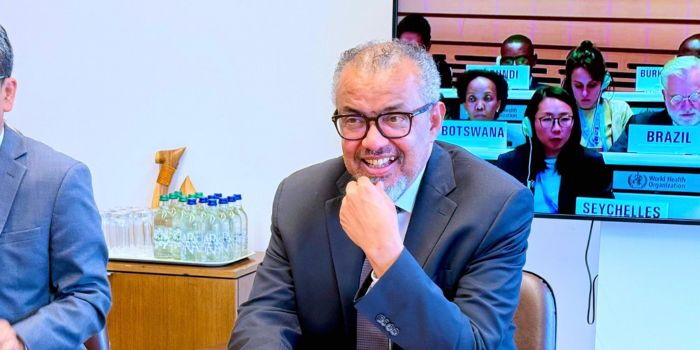The World Health Organization (WHO) has sounded an urgent alert about the dangerous chikungunya virus, a mosquito-borne disease that has resurfaced in Kenya—particularly in coastal areas—posing a serious threat to public health.
The global health body is calling for swift and coordinated action to prevent another global outbreak similar to the one that occurred nearly 20 years ago.
According to WHO officials, the current rise in chikungunya cases is eerily similar to the 2004-2005 epidemic that spread rapidly from Indian Ocean islands to countries in Europe, Asia, and beyond, eventually affecting over half a million people. WHO is concerned that history could repeat itself if swift measures are not taken.
Dr. Diana Rojas Alvarez, a medical officer at WHO, issued the warning during a press briefing in Geneva. “We are seeing history repeat itself. Over 5.6 billion people across 119 countries currently live in areas that are at risk of this virus,” she noted, highlighting the scale of potential danger.
The virus, which is known to cause intense joint pain, prolonged fever, and even permanent disability in some patients, is once again gaining ground in tropical and subtropical regions.
An image of the Aedes aegypti mosquito—the main vector of the virus—has been shared widely as part of WHO’s awareness efforts. Unlike malaria-carrying mosquitoes that bite at night, Aedes aegypti and Aedes albopictus, which transmit chikungunya, are active during the daytime, making them harder to avoid without proper prevention measures.
In Kenya, the situation is already becoming worrying. A recent outbreak in Mombasa County has confirmed 25 positive cases of chikungunya from just 45 samples tested by the Kenya Medical Research Institute (KEMRI). The most affected areas include Mvita, Nyali, Likoni, and Kisauni sub-counties, according to local health officials.
Chikungunya, which was first discovered in Tanzania in 1952, is caused by the Chikungunya Virus (CHIKV). It spreads when an infected female mosquito bites a human.
Though the disease often resolves on its own, it can be very dangerous for vulnerable populations such as young children, the elderly, and people with pre-existing medical conditions. In severe cases, it can even lead to organ damage or death.
Symptoms usually appear 4 to 8 days after being bitten by an infected mosquito. One of the most common and painful symptoms is joint pain, which can persist for weeks, months, or even years. Other symptoms include high fever, joint swelling, muscle aches, headaches, nausea, fatigue, and rashes.
At present, there is no specific cure for chikungunya. WHO advises patients to manage symptoms using pain relievers like paracetamol (acetaminophen) to reduce fever and joint pain. Staying hydrated, getting adequate rest, and seeking supportive medical care are essential steps to recover from the illness and prevent complications.
To avoid getting infected, WHO strongly recommends that people living in or traveling to mosquito-prone areas wear long-sleeved clothes that reduce skin exposure and use mosquito repellents that contain active ingredients like DEET, IR3535, or icaridin. It’s also important to use door and window screens to keep mosquitoes out of the house.
Families are advised to use mosquito nets, especially to protect babies, the elderly, and sick individuals who might sleep during the day.
With growing fears of another global health crisis, WHO is urging countries, including Kenya, to strengthen their mosquito control programs and increase public awareness to stop the spread of this painful and debilitating virus before it reaches epidemic levels again.
Join Gen Z New WhatsApp Channel To Stay Updated On time https://whatsapp.com/channel/0029VaWT5gSGufImU8R0DO30


